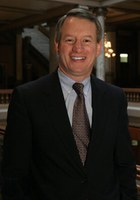
Plan your visit
Meet the Author
November 3, 2016

As July 7, 1861, dawned, war was in the air in Lexington, Indiana. The county seat of Scott County was abuzz with the latest news of the southern rebellion. The Madison Daily and Evening Courier told of skirmishes between Federal troops and secesh forces at Harpers Ferry and Falling Waters, Virginia. Closer to home, word had come that William A. Sanderson had organized a new outfit, the 23rd Indiana, and was recruiting throughout the Second Congressional District for men to join the regiment.
Although Scott County had been rife with sympathy and support for the South, answering the call to serve the Union cause from the county were Jacob T. Kimberlin, a 21-year-old farmhand; his older brother, John J.; and his cousins, William H.H. Kimberlin, Benjamin F. Kimberlin and James Stark. These five young men could not have known at the time that none of them would ever again see their homes. They only knew that the Kimberlins were going to war.
The story of the Kimberlin family and its ups and downs during the Civil War, and after, has been captured by author Michael B. Murphy in The Kimberlins Go to War: A Union Family in Copperhead Country, now available from the Indiana Historical Society Press.
A senior vice president at Hirons and Company, an Indianapolis advertising and public relations firm, Murphy served as an Indiana state representative for 16 years and is a member of the IHS board of trustees. Here, he talks about how he came to write his book.

What inspired you to write about the Kimberlin family?
I was inspired to write about the Kimberlins because I was impressed with their unanimous patriotism during a time and in a place where the word Union was controversial. Of course, history is the business of storytelling. And it certainly helped that I had access to Kimberlin family letters that dated back to the late 1700s. These letters have never been seen by historians or the public before I brought them to light. They provide human perspective to a very complicated conflict.
In doing your research for the book, did you discover anything new about Indiana during the Civil War that you did not expect?
Prior to conducting my research, I had no appreciation for the controversial Hoosier congressional delegation that served Indiana. Four examples:
- Jesse Bright was thrown out of the U.S. Senate for advising Jefferson Davis on where to buy guns cheaply.
- Congressman James Cravens submitted a proposal to separate southern Indiana, Ohio and Illinois, in order to create a new state, which would be called Jackson and would join the Confederacy.
- Congressman William English was the author of the English Swindle during the debate over the Kansas constitution.
- Daniel Voorhees, a Copperhead congressman from Terre Haute, was accused of being a gun-runner for the Confederacy.
Do you have a favorite historic site related to the Civil War? If so, why?
My favorite site related to the Civil War is Antietam. Why? Because it was the battle that convinced Great Britain not to support the Confederacy, and it was also the battle that gave President Abraham Lincoln the confidence to announce the Emancipation Proclamation. It is also a battle that provides a microcosm of leadership issues in the Civil War.
Did your background in politics help you with doing the book?
My background in politics gave me an appreciation for the political nature of war. I include an entire chapter on the development of the Scott County political tradition because politics drives so many decisions during war. An understanding of the political landscape is critical to appreciating the strategic decisions made during war.
Do you have plans for another book project?
I have already begun interviews for the Afghanistan memoirs of a Hoosier Ranger hero. I will co-write it with him.
_____________________








